30 of the Best Cities to Visit in Germany
Germany is a large and beautiful country with so much to see and do. So which are the best cities to visit in Germany? I’ve asked my fellow travel bloggers their best cities to visit in Germany and I’ve added my favorites. My top 4 are Hamburg, Cologne, Rothenburg ob der Tauber and Füssen. I’ve fallen in love with Hamburg, and we have family living close-by, in Norderstedt. Paul proposed to me in Cologne. Rothenburg is such a dreamy city and has a Christmas museum. Füssen is high on my list because of the beautiful castles. But there are many more special cities in Germany as you can see for yourself in this blog.
Best Cities to Visit in Germany
Here are 30 of the best cities in Germany, all are perfect to include on road trips.
Füssen, Bayern
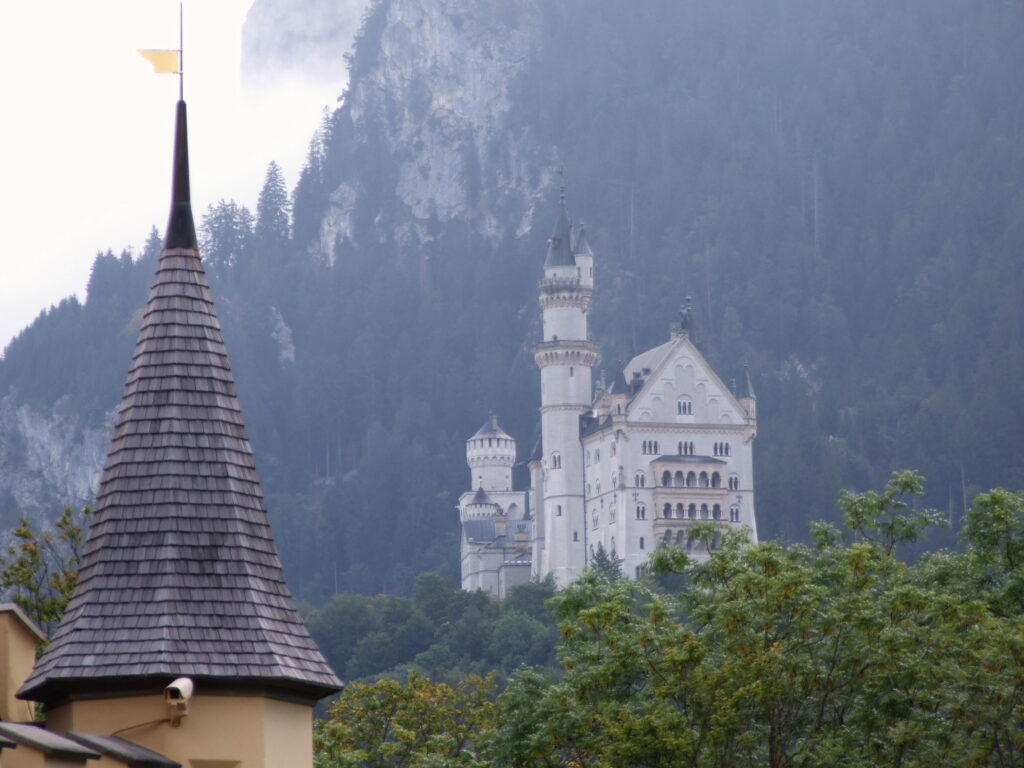
Neuschwanstein as seen from Hohenschwangau
Contributed by Cosette from KarsTravels.
Füssen is a city in the South of Germany on the border with Austria. It’s famous for the beautiful Neuschwanstein castle and is located at the end of the Romantische strasse.
Although Neuschwanstein castle is technically in the nearby town of of Schwangau, just like the less famous, but equally mesmerizing Hohenschwangau castle, people mention Füssen when visiting either of these castles. Both are on the list of most beautiful fairytale castles in Germany.
The Romantische Straße or Romantic Road starts at Würzburg and is a fairytale route that meanders through medieval towns ending in Füssen, where the fairytale castles of Neuschwanstein and Hohenschwangau await. Füssen itself has its roots in the Roman era, it’s located at the old Via Claudia Augusta. It gained city rights at the end of the 13th century.
Worthwhile things to do in Füssen are visiting the Hohes Schloss and Basilika Sankt Mang, it’s history dating back to 750 AD. If you’re into museums, make sure to visit the Museum der Stadt Füssen. The Alps start in Füssen, so the surrounding nature is beautiful with mountains and lakes. Hiking and mountainbiking are perfect outdoor activities with Füssen as a base.
Potsdam, Brandenburg
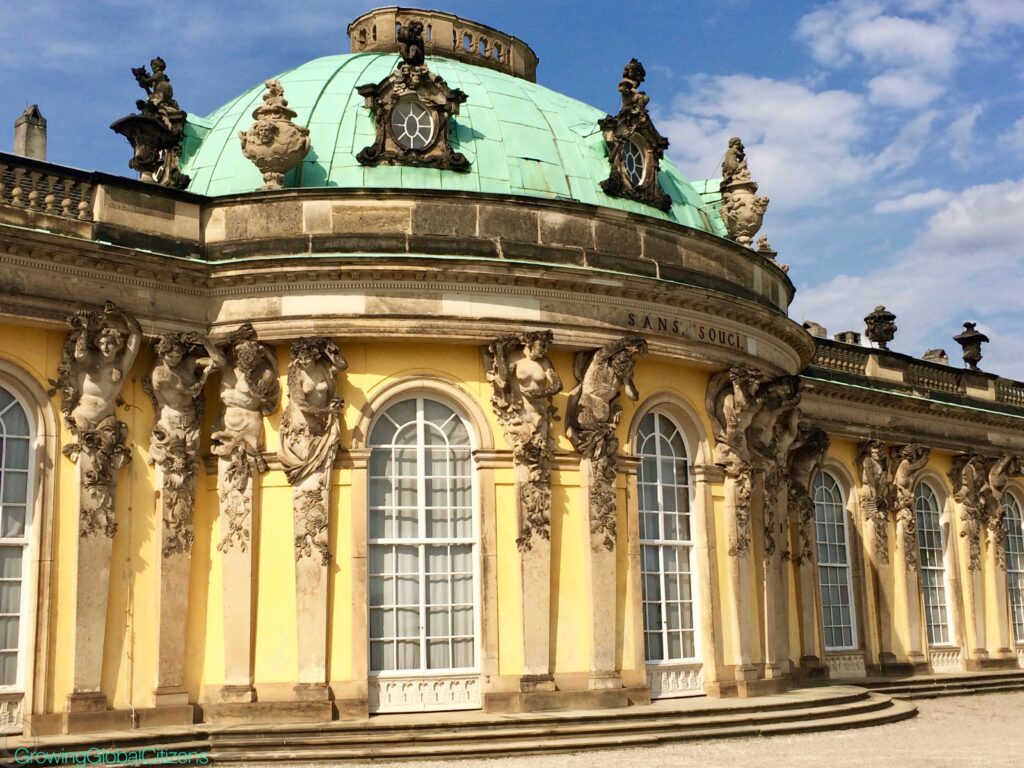
Potsdam by Growing Global Citizens
Contributed by Kristin from Growing Global Citizens.
Visiting the city of Potsdam is an easy day trip from Berlin, even accessible by public transportation on the S-Bahn. Potsdam is known for its beautiful architecture and tranquil setting amongst multiple lakes. History buffs will know Potsdam as the seat of the 1945 Potsdam Conference where the U.S.S.R, the U.K. and the U.S. met to divide Germany after World War II.
A great activity for all ages is renting bikes and biking along the lakes and through Park Babelsberg, which has multiple castles and beaches. The city center is very walkable with lots of cute shops and cafés to stop at and enjoy a radler, the drink of bikers.
The must-see attraction is Sanssouci, the palace of Frederick the Great when he ruled Prussia in the 18th century. It is the largest UNESCO World Heritage Site in Germany, and it is massive. You could easily spend a full day just walking the grounds and seeing all of the extravagant buildings and gardens.
Meißen, Saxony
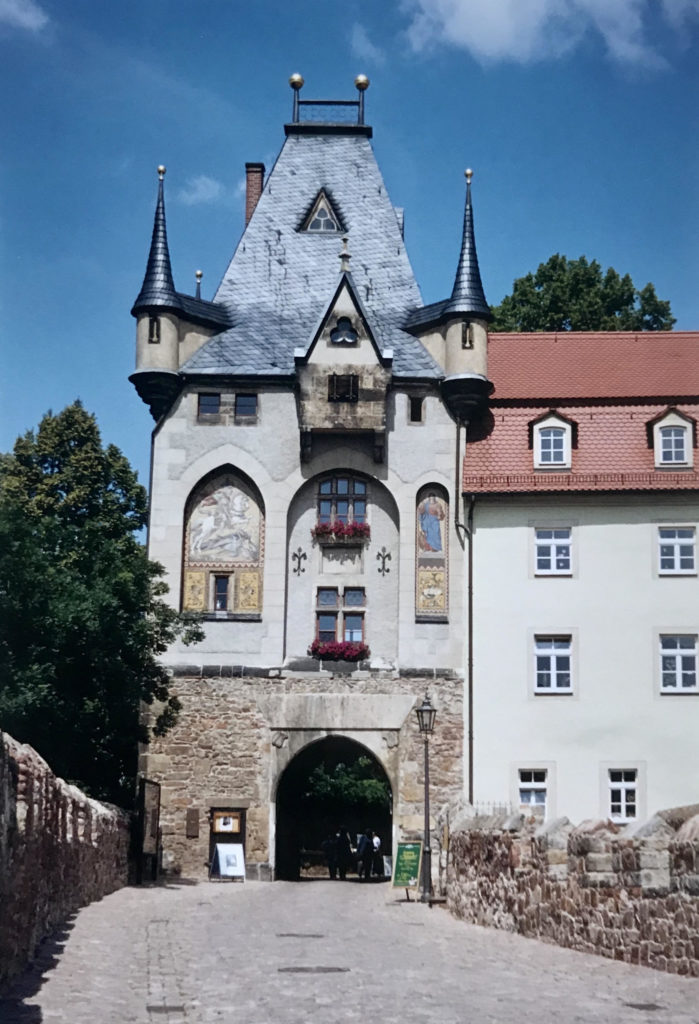
Torhaus of Meissen
Contributed by Cosette from KarsTravels.
Meißen is a city in the East of Germany. It’s known for it’s worldwide famous porcelain. The porcelain is of exceptional quality. Recognizable by the Crossed Swords mark. Nicknamed the white gold. It can be admired at the Meissen Porzellan Manufactur & Museum.
The Albrechtsburg castle is worth a visit. The first European porcelain was produced here in 1710. Further you’ll have a beautiful view over the city from the tower of the Frauenkirche.
Further don’t miss the Stadtmuseum Meißen Franziskaner Klosterkirche und Neogotisches Haus to learn more about the history of the city.
Visit the old town of Meißen and admire the buildings such as the Torhaus, Dom and the Rathaus.
Just 25 kilometers Northwest of Dresden, it’s a must on any Eastern Germany itinerary.
Celle, Lower Saxony

Celle by Ronja Goes Abroad
Contributed by Ronja from Ronja Goes Abroad.
Celle, a small city in Northern Germany is a must-visit for anyone who loves half-timbered houses like the ornate Hoppener Haus. Celle is located in between Hannover and Hamburg. You can get to Celle by train from Hannover in less than 30 minutes, and it’s just an hour and five minutes from Hamburg. Making it super easy to visit!
The main attraction in Celle is the Castle. Celle Castle, located close to the heart of the city, is a magnificent sight to see. If you do not feel like taking a tour, just walk the castle grounds.
If you do not like popular sights, Celle is definitely the city for you. This small city is a fantastic place to stroll around. You don’t have to visit sights, all you have to do is walk around the city and you will fall in love with it. If you want to make strolling around the city fun look for the human-like statues around town.
So add Celle, the town of cute half-timbered houses, to your must-visit list!
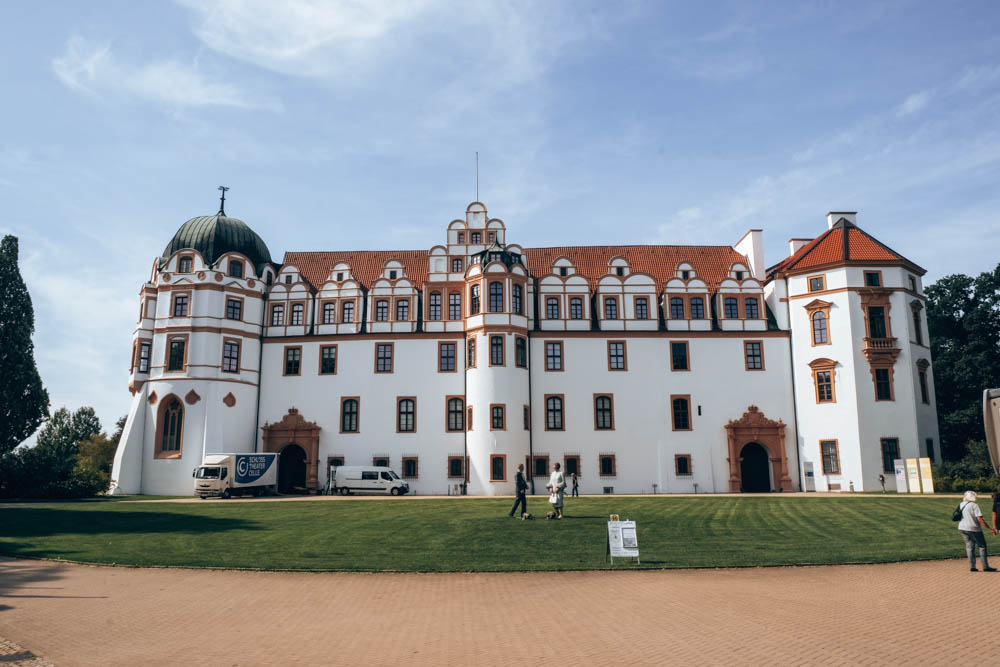
Celle by Ronja Goes Abroad
Frankfurt, Hesse
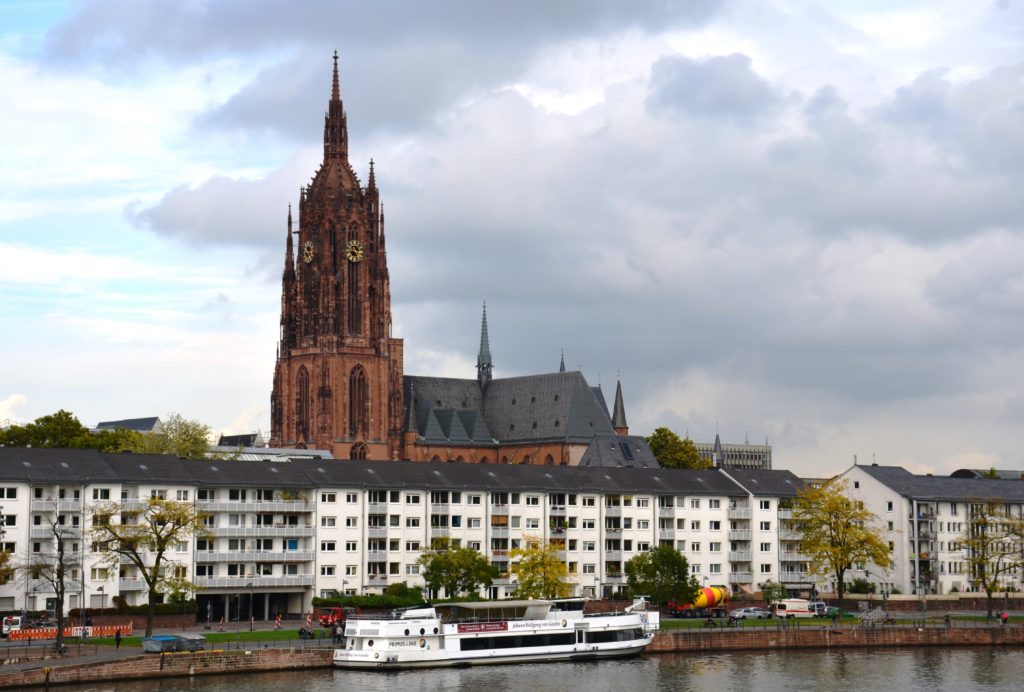
Cathedral of Frankfurt am Main
Contributed by Cosette from KarsTravels.
This city in Western Germany is worth a visit. Discover Frankfurt am Main, there’s enough to see and do.
We recommend Apfelweingaststätte Atschel, since it’s one of the oldest and most beloved cider restaurants in Frankfurt. Frankfurt is famous for the Apfelwein (cider).
A quick way to get an overview of the highlights of the city is to take a sightseeing cruise on the river Main. There’s a downstream and upstream cruise, the downstream one offers the most complete overview of the city.
Frankfurt is the 4th largest city in Germany. Its nickname is Mainhattan, it’s a city full of modern architecture and skyscrapers. The city is the financial heart of Germany. The history of Frankfurt goes all the way back to the Stone Age. In the 16th century it had an important position n the printing press and book trade.
Bamberg, Bayern
Contributed by Sarah from LifePart2 & Beyond.
The gorgeous town of Bamberg was a highlight for us on our two-week river cruise from Budapest to Amsterdam. It’s easy to see why it’s often cited as one of Germany’s most beautiful towns.
This picturesque old town with its charming narrow streets has been a UNESCO World Heritage Site since 1993. The ancient buildings date from the 11th to the 19th century. One of the most impressive sites is the iconic Altes Rathaus (The Old Town Hall), with its incredible murals, located on a tiny island it’s reached by two arched bridges. Also, don’t miss the Romanesque Bamberg Cathedral with its four towers and many stone carvings.
But truly, the best way to enjoy this delightful city is by aimlessly wandering the streets.
The town is also known for its rauchbier, which means ‘smoke beer’. The smoky flavors come from drying the green brewer’s malt over open fires causing the grains to absorb the smoke. A tad too smoky for me, but for those that enjoy a beer, a must-try. For me, the mulled wine was the perfect accompaniment to enjoy the surroundings and experience the first snowflakes of winter.
Trier, Rhineland-Palatinate
Contributed by Brit from Life of Brit.
Trier is a small and somewhat unknown tourist destination that you shouldn’t miss in the German state of Rhineland-Palatinate. It’s considered Germany’s oldest city. It’s brimming with incredible things to do and historical landmarks that date back to the Romans.
Trier’s most famous landmark is the Porta Nigra, or the Black Gate. This impressive landmark was built over 1,800 years ago and is a testament to the ancient Roman history that Trier is renowned for. Visitors can climb up and into the Porta Nigra for views of the city as well as visit other Roman ruins like the Roman amphitheater and imperial baths.
Other exciting things to do in Trier include visiting the Trier Dom, Germany’s oldest cathedral, and the Karl Marx House, a museum housed within the infamous philosopher’s birthplace.
Not to mention, Trier is nestled within the lush Moselle River Valley. A beautiful region of Germany famous for rolling vineyards, picturesque river views, and exciting hiking. That means that no trip to Trier is complete without sampling the local Riesling. One of the best wine tastings in Trier is at the Vereinigte Hospitien Winery. Home to the oldest wine cellar in the country.
You only need a day or two to experience the charm of Trier. But its location near the Luxembourg border, the charming town of Cochem, and the famous Burg Eltz castle makes it an excellent stop on a longer trip around Rhineland-Palatinate.
Rothenburg ob der Tauber, Bayern

Kathe Wolfart at Rothenburg
Contributed by Cosette from KarsTravels.
This popular touristic city is on the Romantische Straße and is still completely in medieval style. When visiting the city take a guided city tour during the day and at night as well. Both are fantastic and a good way to learn more about this city.
Rothenburg is also beautiful to just wander around in and admire all the beautiful buildings. Such as the Marktplatz and the fortifications. The most photographed or instagrammable place in Rothenburg ob der Tauber is Plönlein. Do also stop at Diller’s Schneeballen to try a schneeball (local delicatesse). On the Marktplatz don’t miss the Ratstrinkstube with a clock and sundial. Watch the show!
Don’t miss the Käthe Wohlfahrt store with Weihnachtsmuseum (Christmas museum). It has the biggest collection of traditional German Christmas decorations in the world and is a true site to see. It’s not large, but everywhere you look, there’s something to see.
Also interesting to visit is the Mittelalterliches Kriminalmuseum (Medieval Crime Museum), with everything you want to know and don’t want to know about torture of criminals in Medieval times.
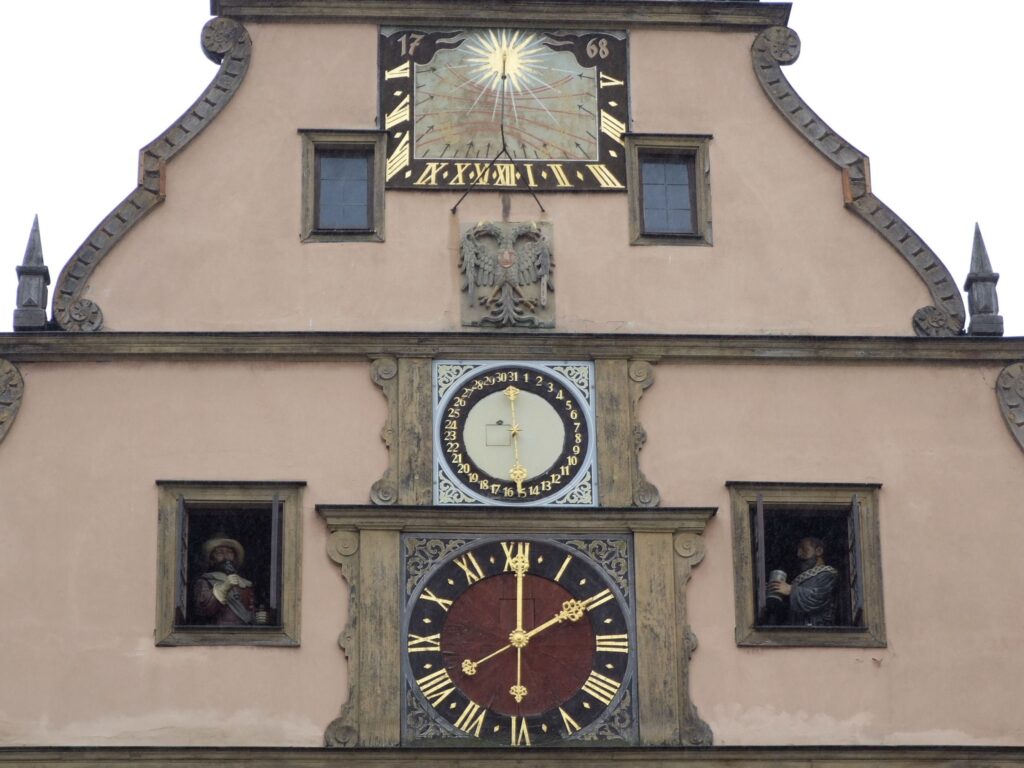
Ratstrinkstube at Rothenburg
Berlin
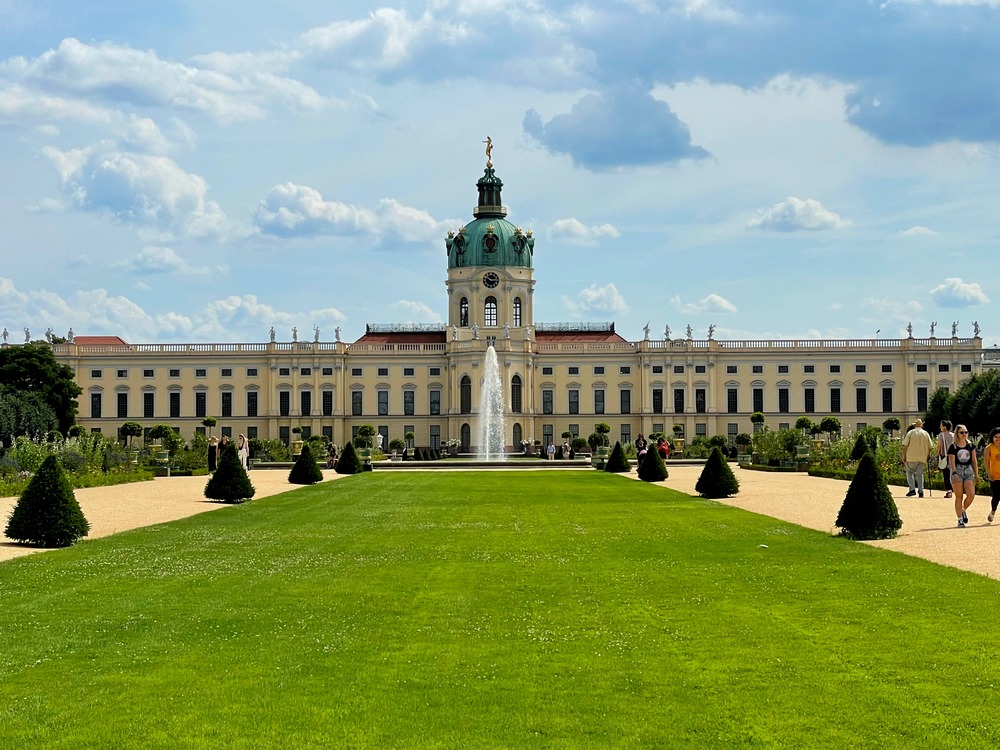
Berlin Charlottenburg Palace Gardens by Berlin Travel Tips
Contributed by Ali from Berlin Travel Tips.
No trip to Germany would be complete without visiting Berlin. Not only is Berlin the capital, but it’s diverse, quirky, and chock full of history. The city is also easy on the budget since there are so many free and cheap things to do in Berlin.
In the center of Berlin, you’ll find most of the iconic sights. Brandenburg Gate, built in the 18th century, is Berlin’s only remaining city gate. It sat on the dividing line between East and West Berlin, but quickly came to symbolize unity once the Berlin Wall fell. It’s also become a symbol of the city and even a symbol of Germany itself.
Another attraction you shouldn’t – and probably can’t – miss is the TV Tower. It’s located in what was East Berlin, and the Soviets built it with the intention of being seen from almost anywhere in the city. Due to its height, it’s a fantastic place for views of the city.
Other sights you shouldn’t miss include the Reichstag Building, Berlin Cathedral, Holocaust Memorial, Charlottenburg Palace, Tiergarten Park, and Museum Island. Museum Island is a UNESCO World Heritage site comprised of several important museums. And don’t miss the East Side Gallery and the Bernauer Strasse Wall Memorial, two excellent but very different historical sights relating to the Berlin Wall.
If you’re looking for something a little more quirky, seek out Berlin’s famous street art. You’ll see it everywhere, but the most well-known pieces are mostly in Friedrichshain and Kreuzberg. For a not-so-typical park, check out Tempelhof. This park used to be an airport, and now you can walk on the runway. And if food is your thing, Berlin is the place for you. You’ll find cuisines from all around the world here.
Cochem, Rhineland-Palatinate
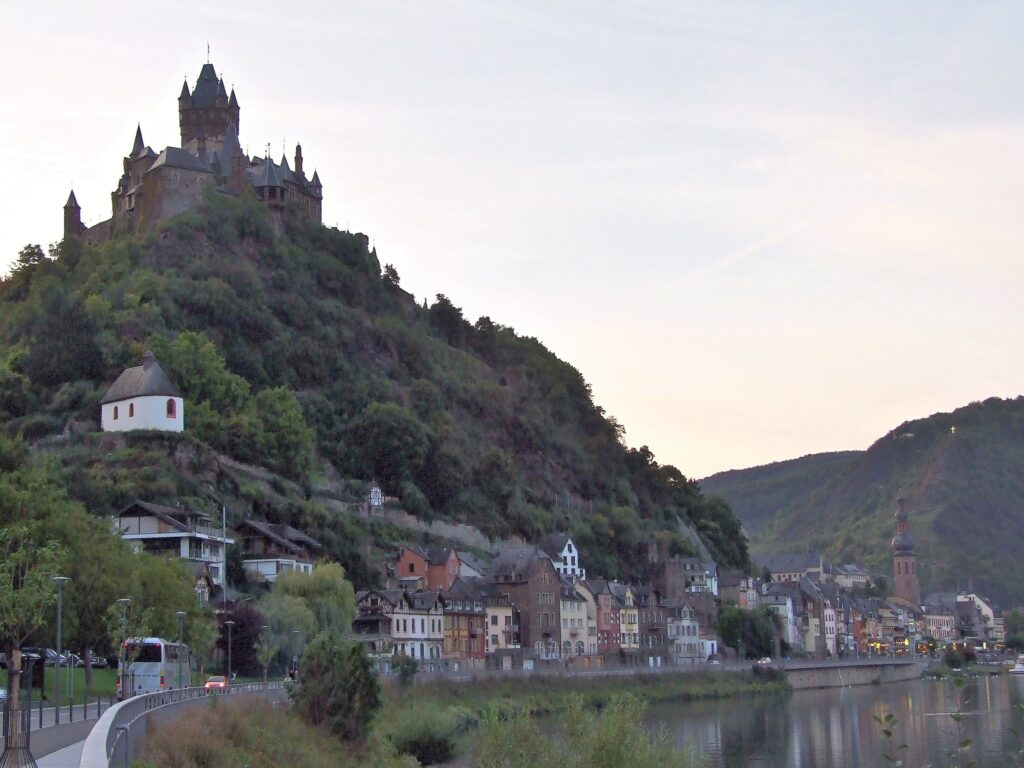
Reichsburg Cochem
Contributed by Cosette from KarsTravels.
A small, touristic city on the Moselle. Reichsburg Cochem towers over the place and dominates every view of the city.
Next to the Reichsburg, Cochem and surroundings is famous for the Moselle wine. This area is the oldest wine area of Germany. This makes Cochem a perfect base for exploring this wine region, either by car, bike, foot or boat.
In Cochem itself other attractions are the Bundesbank-Bunker, the historical Senfmuehle (mustard mill), the Edelstein Museum and the Rathaus. First mention of Cochem is in 882 AD, city rights were granted in 1332. The fortress was built in the 12th and 13th century. It was destroyed in the 17th century, but rebuilt in the 19th century.
Peine, Lower Saxony
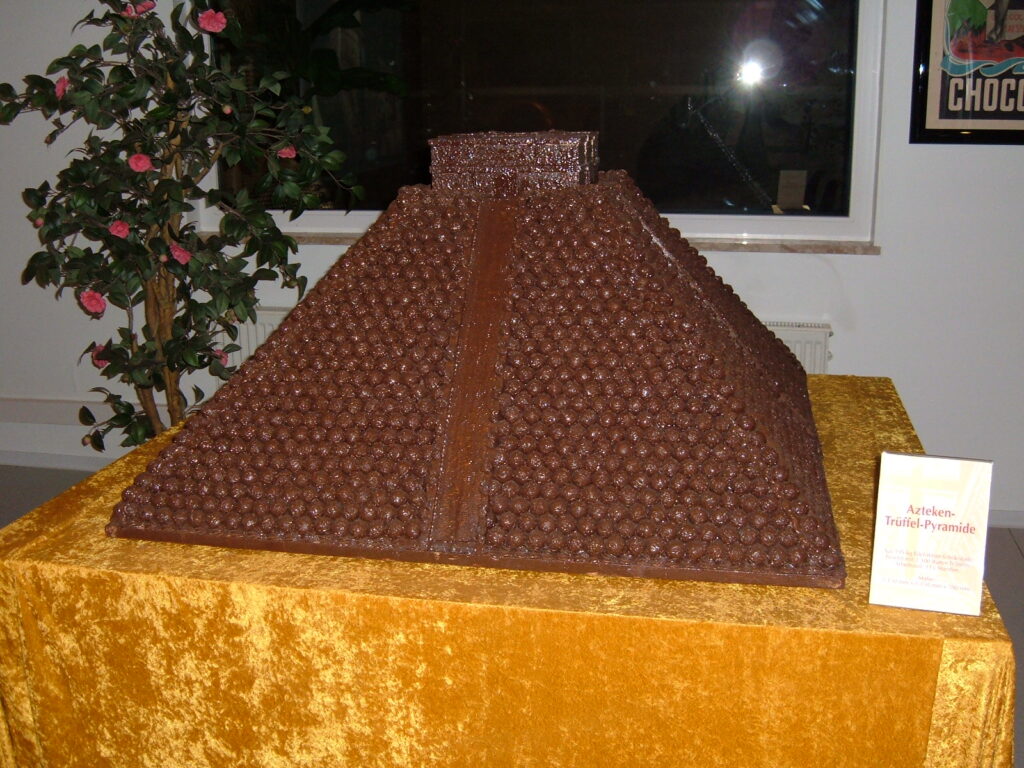
Rausch Schokoland by Ragain Adventures
Contributed by Christina from Ragain Adventures.
Peine is a small, beautiful German town located in Lower Saxony. It is the capital of the district of Peine and is located 25 km West of Braunschweig and 40 km East of Hannover. While Peine has several attractions for visitor’s including Kreismuseum Peine, shopping at City Galerie Peine, and the beautiful Jakobi Kirche, my absolute favorite is Rausch Schokoland.
Rausch Schokoland is a museum and chocolate café / store located at the Rausch Chocolate factory in Peine. Once you walk through the door, you are surrounded by the smell of chocolate. At the museum, you can learn about the history of the production of chocolate from around the world. After the exhibits, be sure to enjoy hot chocolate and a snack while watching the large chocolate volcano. On your way home, be sure to stock up on Rausch Chocolates for yourself, friends, and family.
If you are looking for a great hotel for your stay in Peine, be sure to check out Hotel Schoenau. With comfortable rooms, an onsite restaurant / bar and even a beautiful event center, Hotel Schoenau is a great hotel with a local feel.
Leipzig, Saxony
Contributed by Cosette from KarsTravels.
Leipzig is a city in the East of Germany. In 1165 Leipzig gained city right’s, relying on trade. In the 15th century the city became a center of the printing press. Hence a German Printing Press museum (Deutsche Buch- und Schriftmuseum). In 1813 the Volkerenslag was near Leipzig, in which Napoleon was defeated. For this they erected the Völkerschlachtdenkmal (Monument to the Battle of the Nations) in 1913, still a monument worth a visit.
Lots of famous composers lived in Leipzig making it a music city. Johann Sebastian Bach, Richard Wagner and Edvard Grieg among them. There’s a Bach-Museum in town and a Grieg-Begegnungsstätte. Further there’s also the Mendelssohn-Haus and those of Robert Schumann and Friedrich von Schiller. There’s also a music instruments museum, so enough museums for music lovers. There’s even a guided music tour along museums and statues. The St. Thomas Church is where Bach played the organ.
Brandenburg, Brandenburg
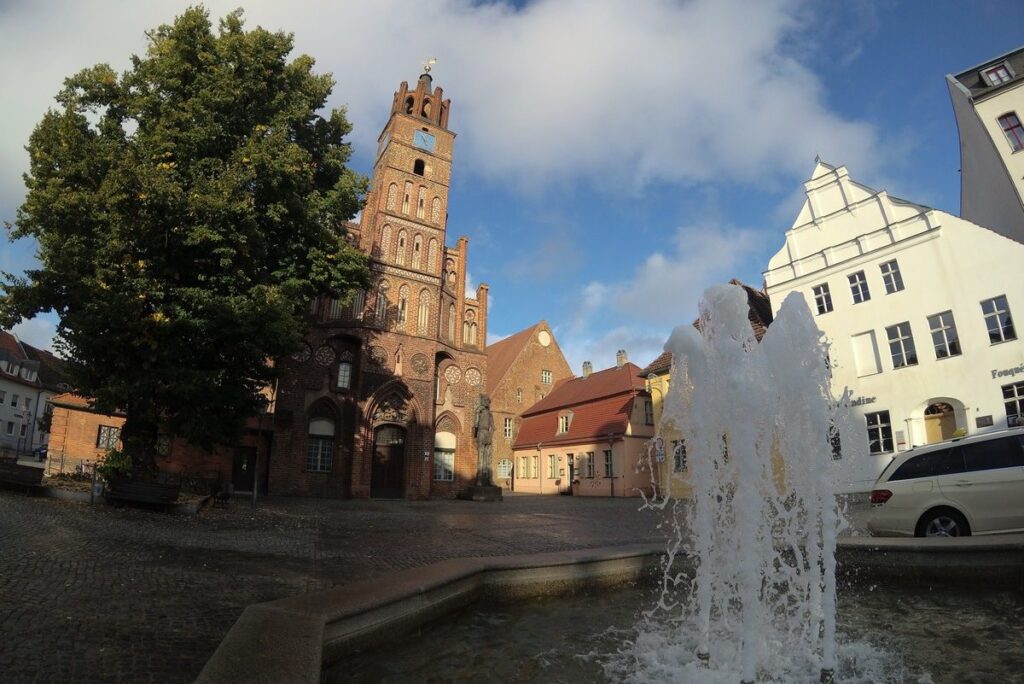
Brandenburg by Tymrazem
Contributed by Jakub from Tymrazem.
Brandenburg is located in the region that is named after the city (Brandenburg). Currently, the capital is Potsdam, but Brandenburg was once even more important than Berlin, from which it is about 80 kilometers away.
Originally it was a Slavic town called Brenna. From the year 948 (with breaks) Brandenburg was the seat of the bishopric.
Brandenburg has a lot to offer and the interesting surroundings make it a very good weekend destination. The must-see places in the city include the old towns, city walls, churches and “wild pugs”. In the area, be sure to check out Potsdam with its palaces and gardens (for example Cecilienhof), and the Babelsberg film studio.
Brandenburg is situated on the Havel River. It is used for communication and for tourists it can turn out to be a great idea to spend time in. In the city, you can rent a houseboat and discover the area from its deck.
It does not matter if Brandenburg is the destination of a longer journey or if you come here during your stay in Berlin or Potsdam – it is definitely worth visiting!
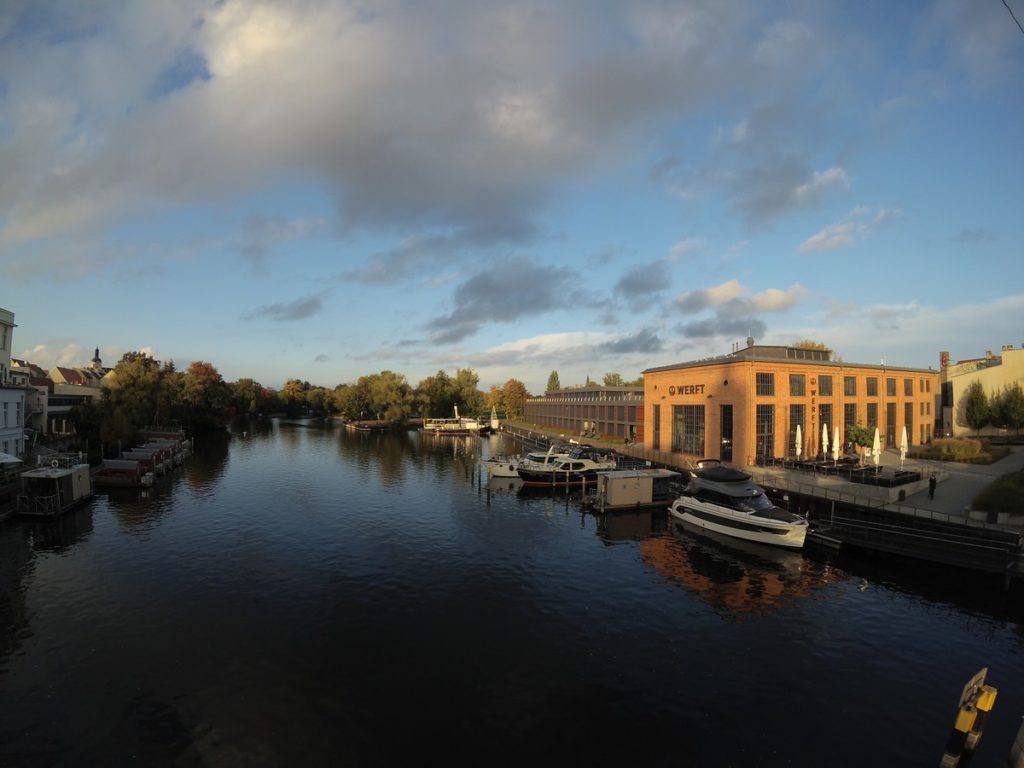
Brandenburg by Tymrazem
Lutherstadt Wittenberg, Saxony-Anhalt
Contributed by Cosette from KarsTravels.
Lutherstadt Wittenberg is in Eastern Germany. The city dates from the 12th century, the add on Lutherstadt dates from 1922. Translated it means Luther city, after Martin Luther. Wittenberg was the city where Luther made his Ninety-Five Theses known. You can see them for yourself on the doors of the All Saints’ Church. They’re engraved on the door. Wittenberg is known as the city where the Reformation started.
Luthers house is in Lutherstadt Wittenberg, and that of Philip Melanchton, a reformator as well. Lucas Cranach, a painter, lived in the city at the same time as Luther. His house is now a museum. An architectural monument and worth a look is the Hundertwasserschule. A really colorful building, in line with Hundertwasser’s style.
Most of what there is to do in Wittenberg revolves around the Reformation. The Stadtkirche and the Slosskirche are important in the Reformation.
Rostock, Mecklenburg-Vorpommern
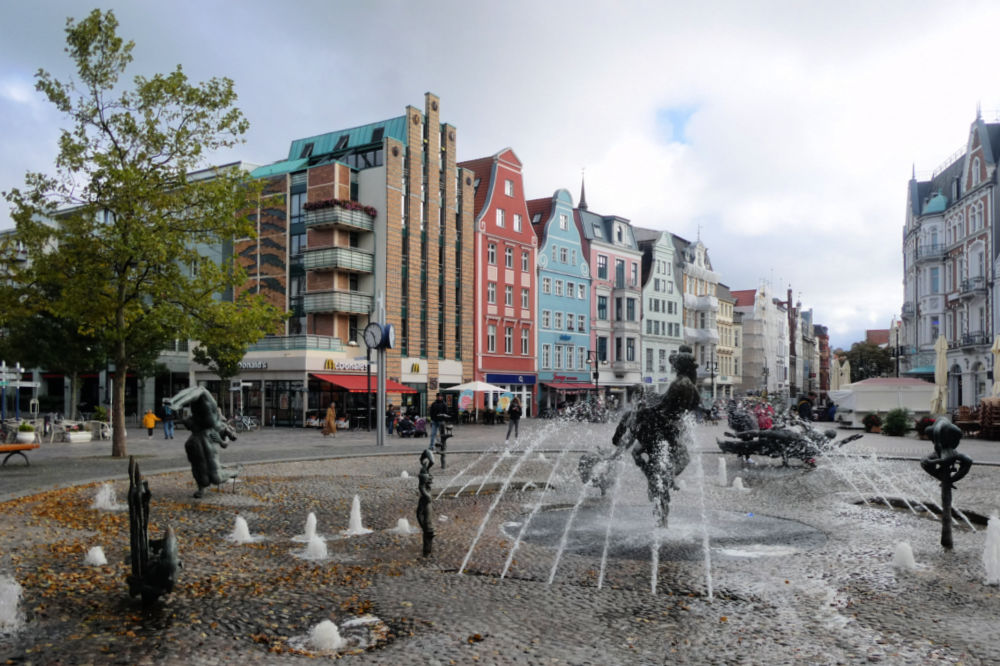
Kröpeliner Strasse in Rostock by One Trip at a Time
Contributed by Lee & Stacey from One Trip At a Time.
Founded in the 13th century, Rostock is quite possibly one of the most delightful cities to visit in Germany that you haven’t heard of. Historically it was one of the key players in the Hanseatic League and has been an important shipbuilding center since Medieval times. Today it is a wonderful city to wander and explore, especially if you are in port for the day in nearby Warnemünde on a Baltic cruise.
With a compact historic center, many of the best things to see and do in Rostock are within easy walking distance. Begin a visit to the city with a wander along Neuer Markt to see the colourful merchant houses, the pretty pink (yes, pink!) Town Hall, and Marienkirche, renowned for its 15th century astronomical clock where you can still watch its “Apostles’ Procession” each day at noon. Then stroll Kröpeliner Straße to see gabled houses, visit shops, and see the playful fountain in Universitätsplatz.
When you want to learn more about Rostock’s history. Take some time to visit the Cultural History Museum and a walk along the old city walls to see Kröpeliner Tor (a watchtower) and Steintor, a city gate from the Middle Ages should definitely be on your agenda.
To top off your visit to Rostock, don’t miss the opportunity to take in the city from above by heading up the tower of Petrikirche to its observation gallery. From this vantage point, you can see all the way across the striking orange rooftops to the Port of Rostock, along the river, and to Marienkirche several blocks away.
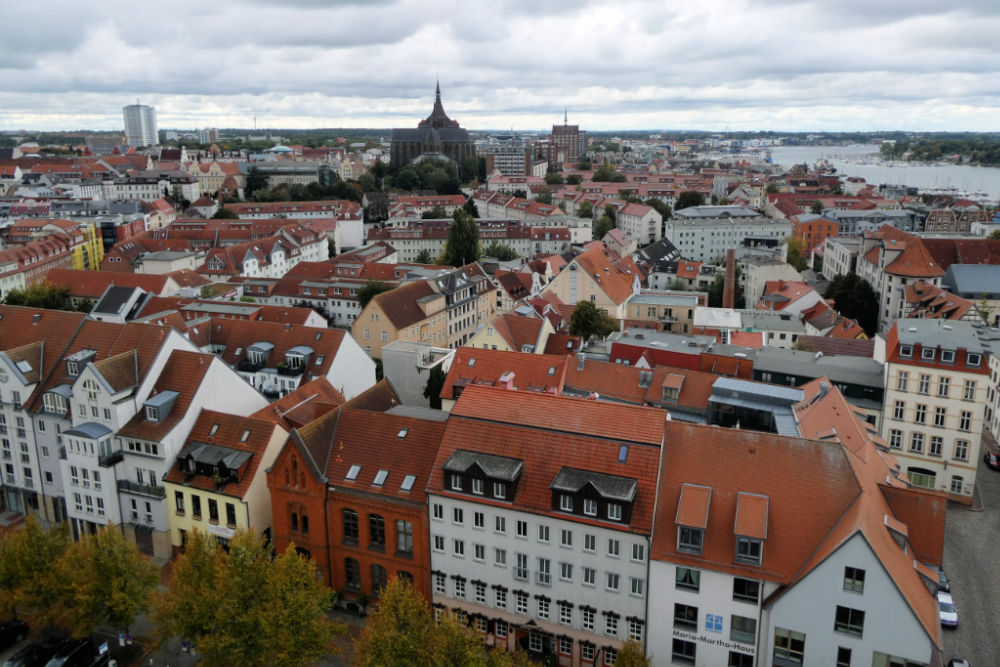
View from Petrikirche by One Trip at a Time
Lübeck, Schleswig-Holstein
Contributed by Cosette from KarsTravels.
Lübeck is a city in Northern Germany, close to Denmark. It’s a Hanseatic city and became wealthy during that time. The historical old town is beautiful and is famous as the city of marzipan. As such Lübeck draws a lot of tourists.
Go on a self-guided (or guided) tour in the old town to discover all the monumental buildings and their history. Next to that find out why Lübeck is the city of marzipan and taste it!
Lübeck is the home of Niederegger, who have produced quality marzipan since 1806. You can taste all their product and learn more about the history of the company at Café Niederegger at the old city. Visiting this café is a must even when you’re not a fan of marzipan.
Among the monumental buildings in the city is the Marienkirche, an example of the Brick Gothic. The fortifications and two city gates are still there, the Holstentor and Burgtor. The Salzspeicher, was where salt was being kept until it was shipped to other Hanseatic cities.
Lübeck dates back to at least the 8th century. Lübeck eventually became the most important Hanseatic city in the 16th century. There’s a Hanzemuseum to learn all about the Hanseatic league.
Mainz, Rhineland-Palatinate
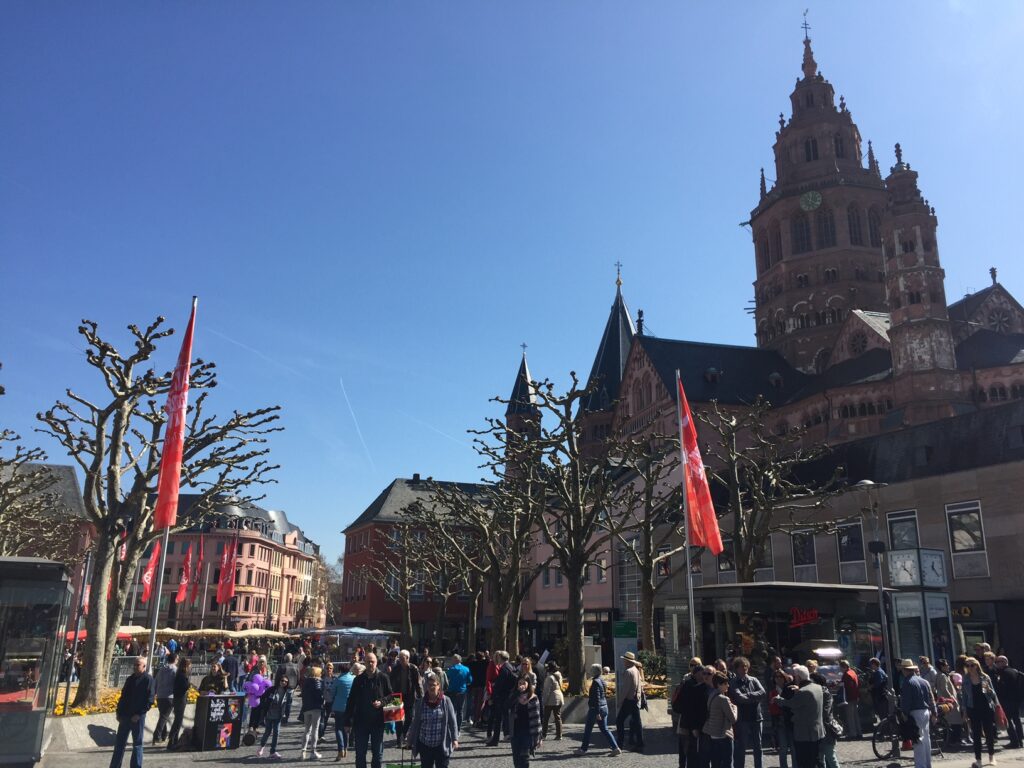
Mainz by JOURNICATION Travel Blog
Contributed by Phil from JOURNICATION Travel Blog.
Mainz is considered an insider’s tip when traveling to the West of Germany. Located near Frankfurt, the capital of the state of Rhineland-Palatinate has so much to offer.
Mainz has a long history. Already the Romans[……]
